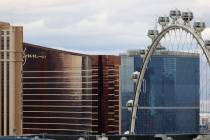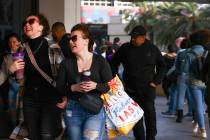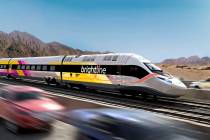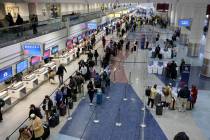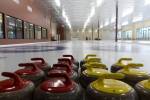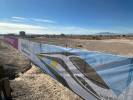Will tourism leaders, lawmakers finally fix California’s I-15 bottlenecks?
Nearly every Friday and Sunday, a vast stretch of Interstate 15 south of Las Vegas seems to turn into the largest linear parking lot in the West.
It’s been one of the region’s biggest infrastructure challenges for decades. Tourism leaders are mobilizing to solve the traffic problems that plague the primary artery between Southern California and Southern Nevada — and federal spending legislation could provide needed support.
“People have got to be able to get to a location to be able to enjoy what we have to offer,” Rep. Dina Titus, D-Nev., said at the Global Gaming Expo this month. “Here in Nevada, if you go I-15 to Southern California on the weekends, that’s just like a parking lot, there’s so much traffic. We need to lighten that.”
Las Vegas markets as well as or better than any other tourism destination, with its attention to entertainment, sports, special events, food and, of course, gambling.
Southern California remains Las Vegas’ biggest tourist market. The Las Vegas Convention and Visitors Authority has reported that weekend visitation is rapidly approaching pre-pandemic levels. Much of that can be attributed to the loyalty of Californians to our resorts.
But those who come to the city often have a sinking feeling at hotel checkout time when they realize they’re going to be sitting in their cars as they inch home going well under the posted speed limit.
Titus indicated the solution to I-15 traffic congestion would be improvements to the highway as well as funding for high-speed rail — both of which are supported in a bipartisan $1.2 trillion infrastructure spending bill that is held up in Congress.
Last week, LVCVA President and CEO Steve Hill provided another I-15 update.
The Vegas Chamber recently had its annual D.C. Fly-in to Washington, at which local business people connect with lawmakers to discuss issues affecting their livelihoods. Hill was asked to participate on a transportation panel, and I-15 was one of the leading topics.
Job performance goal
Solving the I-15 problem was one of Hill’s job performance goals first discussed in June. He characterized the panel discussion as a momentum-builder for the issue.
“We had been working on it for some period of time, but we’re really ramping up that effort to put a spotlight on the issue to make sure that people know how big an obstacle it is to the recovery of tourism in Las Vegas,” Hill said. “It is probably, outside of the pandemic, the biggest obstacle that we have for recovery of this industry and growth in the future.”
Hill said the convention authority is working to develop coalitions along the length of I-15 so communities from California to the Canadian border in Montana can rally support with their own lawmakers.
Varied solutions will be necessary, Hill said.
“We typically think about widening I-15,” he said. “But the solutions that can reduce congestion there are certainly more than just lane widening. One of the things I’ve pointed out is doing everything we can to make sure that Brightline is able to move forward. It’s a private project and is their project, but making sure that they can move forward is one of the things we feel helps solve that problem in the short term.”
Rail solution
Brightline is the high-speed rail company looking to build a train line between Las Vegas and Victorville, California, with plans to extend the line to Palmdale, California, where California’s high-speed rail project would take passengers to downtown Los Angeles.
While Brightline will help by taking some travelers off I-15, Hill noted that the I-15 problem is rooted in freeway bottlenecks that can only be addressed with more traffic lanes.
“There are four locations between the (California-Nevada) state line and Baker where I-15 narrows from three lanes to two,” he said. “The two really critical points where that happens are in the southbound lane. One is right at the state line, maybe a half-mile inside of Nevada, and extends a few miles past the agriculture station. Widening that two-lane stretch to three lanes would eliminate that funnel that inevitably every weekend creates a bottleneck there.”
The same thing happens on another stretch about 14 miles south. A three-lane highway shrinks two lanes.
“So, of the roughly 100 miles of interstate if you count 50 miles in each direction between the state line and Baker, really only a little less than 30 of those miles are two-lane roads rather than three-lane roads, but they create a consistent problem, particularly on the southbound side.”
Hill said he once calculated the cost of building new lanes at $3 million per mile — an estimate that seems plausible today. Some additional costs may be incurred for the reconstruction of bridges over desert washes and addressing environmental concerns for the habitats of the desert tortoise.
In engineering terms, $100 million is a small investment to solve a big problem, Hill said.
Las Vegas Mayor Carolyn Goodman, a longtime supporter of adding lanes to I-15, thanked Hill for attacking the issue. She and Hill also noted that eliminating I-15 bottlenecks not only would help tourism, but would improve the movement of goods from Southern California seaports, improve supply chain routes and help with gift deliveries during the holiday season.
“I-15 is a conversation that is starting to get more traction,” Hill said.
Contact Richard N. Velotta at rvelotta@reviewjournal.com or 702-477-3893. Follow @RickVelotta on Twitter.



















